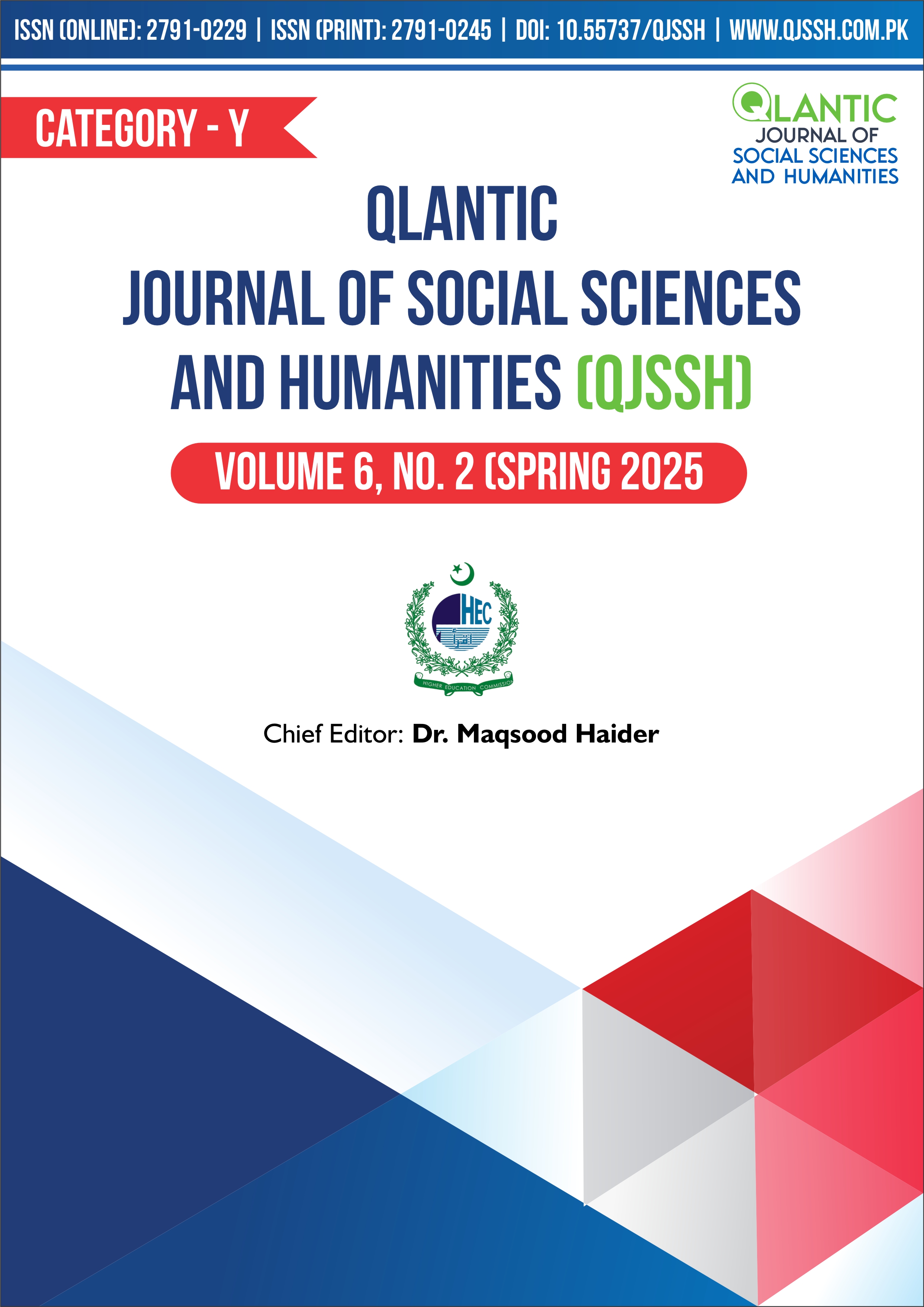An Analysis of Linguistics Patterns in Online Product or Service Reviews and their Influence on Customer Behavior
DOI:
https://doi.org/10.55737/qjssh.vi-ii.25358Keywords:
Linguistics Pattern, Online Product, Service Reviews, Customer BehaviorAbstract
In this digital era, people share views, experiences, and issues about online products with others. It is the same case with the online customer; customers read and discuss everything about the target product through different websites created by the companies or site pages. Customer reviews are critical in this age. Numerous studies have been attempted regarding customer reviews of online product services. Still, significantly fewer steps are taken to improve the deficiency related to customer reviews. This study analyzes online product and service reviews by applying linguistic pattern analysis to identify customer needs. Combining context information extracted from the reviews with details about the products and services, a semantic embedding method is used to capture these needs effectively. This research represents an early effort to integrate insights from customer reviews with their underlying expectations. The proposed approach offers valuable potential for understanding online customer feedback on specific products and services.
References
Ali, M. M., Doumbouya, M. B., Louge, T., Rai, R., & Karray, M. H. (2020). An ontology-based approach to extract product's design features from online customers’ reviews. Computers in Industry, 116, 103175. https://doi.org/10.1016/j.compind.2019.103175
Archak, N., Ghose, A., & Ipeirotis, P. G. (2011). Deriving the pricing power of product features by mining consumer reviews. Management Science, 57(8), 1485-1509. https://doi.org/10.1287/mnsc.1110.1370
Athira, U., & Thampi, S. M. (2018). Linguistic feature based filtering mechanism for recommending posts in a social networking group. IEEE Access, 6, 4470-4484. https://doi.org/10.1109/ACCESS.2017.2789200
Chen, Y., & Xie, J. (2008). Online consumer review: Word-of-Mouth as a new element of marketing communication mix. Management Science, 54(3), 477-491. https://doi.org/10.1287/mnsc.1070.0810
Chevalier, J. A., & Mayzlin, D. (2006). The effect of word of mouth on sales: Online book reviews. Journal of Marketing Research, 43(3), 345-354. https://doi.org/10.1509/jmkr.43.3.345
China Internet Network Information Center (CNNIC). (2015). The 35th statistical report on China Internet network development [EB/OI].
Cialdini, R. B. (2001). Influence: Science and practice (4th ed.). Allyn and Bacon.
Dellarocas, C. (2003). The digitization of word of mouth: Promise and challenges of online feedback mechanisms. Management Science, 49(10), 1407-1424. https://doi.org/10.1287/mnsc.49.10.1407.17308
Flanagin, A. J., Metzger, M. J., Pure, R., Markov, A., & Hartsell, E. (2014). Mitigating risk in ecommerce transactions: Perceptions of information credibility and the role of user-generated ratings in product quality and purchase intention. Electronic Commerce Research, 14(1), 1-23. https://doi.org/10.1007/s10660-014-9139-2
Forman, C., Ghose, A., & Wiesenfeld, B. (2008). Examining the relationship between reviews and sales: The role of reviewer identity disclosure in electronic markets. Information Systems Research, 19(3), 291–313. https://doi.org/10.1287/isre.1080.0193
Kapitsaki, G. M., Kalaitdou, G., Metturist, C. A., Achilleos, P., & Papadopoulos, G. A. (2015). Identifying context information in datasets. In Proceedings of the International Conference on Modeling Using Context (pp. 214–225). Springer. https://doi.org/10.1007/978-3-319-25591-0_18
Liu, B. (2012). Sentiment analysis and opinion mining. Morgan & Claypool Publishers.
Luca, M., & Zervas, G. (2016). Fake it till you make it: Reputation, competition, and Yelp review fraud. Management Science, 62(12), 3412–3427. https://doi.org/10.1287/mnsc.2015.2304
Mei, Q., & Zhai, C. (2006). A mixture model for contextual text mining. In Proceedings of the 12th ACM SIGKDD International Conference on Knowledge Discovery and Data Mining (pp. 649–655). https://doi.org/10.1145/1150402.1150475
Mudambi, S. M., & Schuff, D. (2010). What makes a helpful online review? A study of customer reviews on Amazon.com. MIS Quarterly, 34(1), 185–200. https://doi.org/10.2307/20721420
Pang, B., & Lee, L. (2008). Opinion mining and sentiment analysis. Foundations and Trends in Information Retrieval, 2(1–2), 1–135. https://doi.org/10.1561/1500000011
Park, C., & Lee, T. M. (2009). Information direction, website reputation, and eWOM effect: A moderating role of product type. Journal of Business Research, 62(1), 61–67. https://doi.org/10.1016/j.jbusres.2007.11.014
Petty, R. E., & Cacioppo, J. T. (1986). Communication and persuasion: Central and peripheral routes to attitude change. Springer.
Schwartz, R., Reichart, R., & Rappoport, A. (2015). Symmetric pattern-based word embedding for improved word similarity prediction. In Proceedings of the 19th Conference on Computational Natural Language Learning (pp. 258–267). https://doi.org/10.18653/v1/K15-1026
Smith, D., Menon, S., & Sivakumar, K. (2005). Online peer and editorial recommendations, trust, and choice in virtual markets. Journal of Interactive Marketing, 19(3), 15–37. https://doi.org/10.1002/dir.20041
Tsao, W. C., Hsieh, M. T., Shih, L. W., & Lin, T. M. Y. (2015). Compliance with eWOM: The influence of hotel reviews on booking intention from the perspective of consumer conformity. International Journal of Hospitality Management, 46, 99–111. https://doi.org/10.1016/j.ijhm.2015.01.008
Zhan, J., Loh, H. T., & Liu, Y. (2009). Gather customer concerns from online product reviews—A text summarization approach. Expert Systems with Applications, 36(2), 2107–2115. https://doi.org/10.1016/j.eswa.2007.12.044
Zhang, M., Fan, B., Zhang, N., Wang, W., & Fan, W. (2016). Mining product innovation ideas from online reviews. Information & Management, 53(8), 951–963. https://doi.org/10.1016/j.im.2016.02.003
Downloads
Published
Issue
Section
License

This work is licensed under a Creative Commons Attribution-NonCommercial 4.0 International License.





